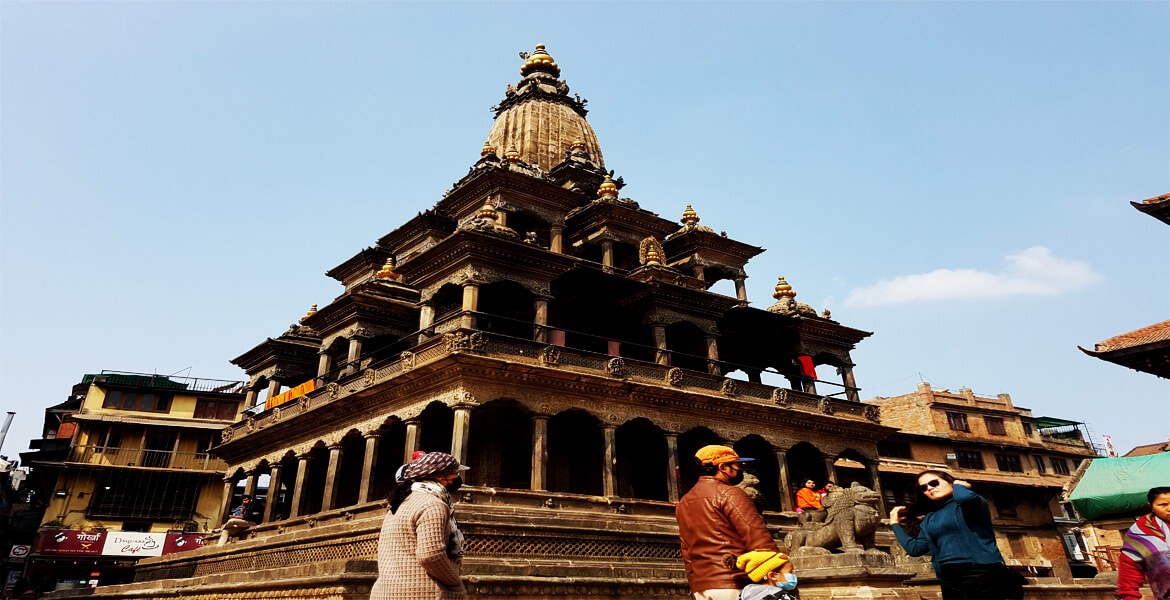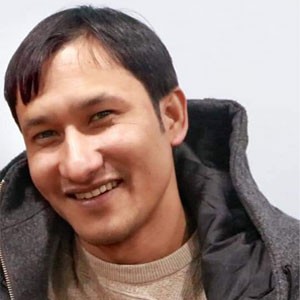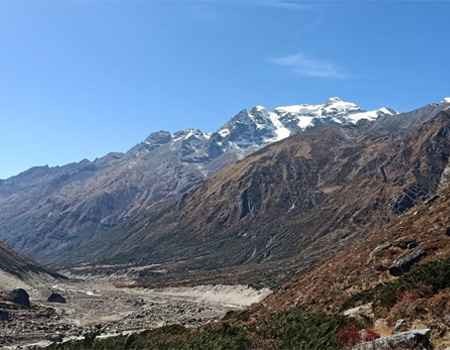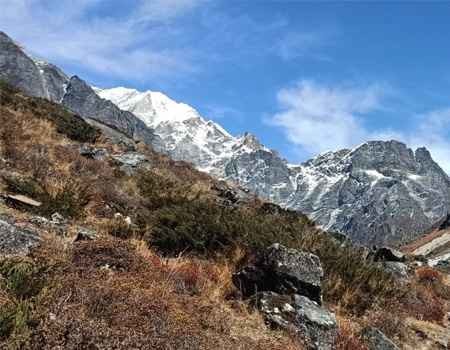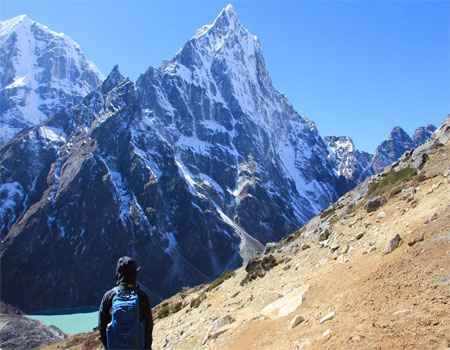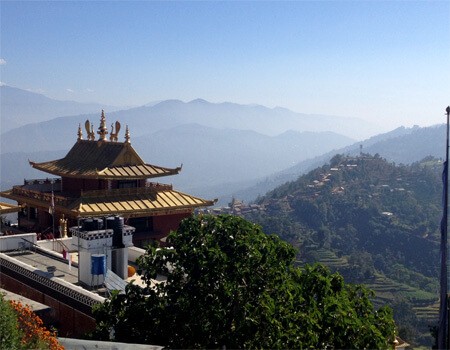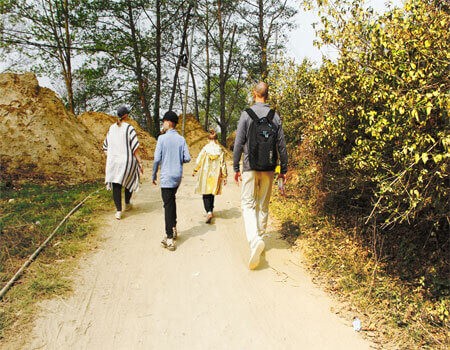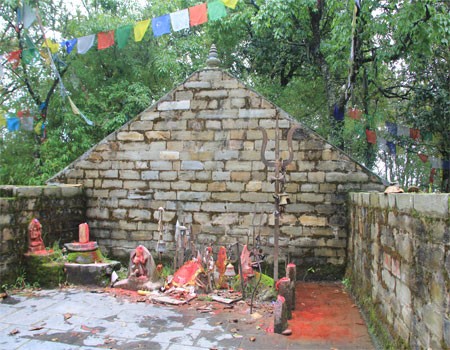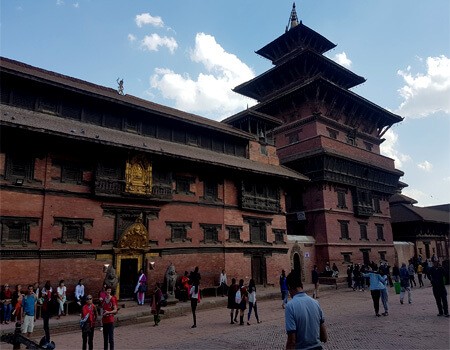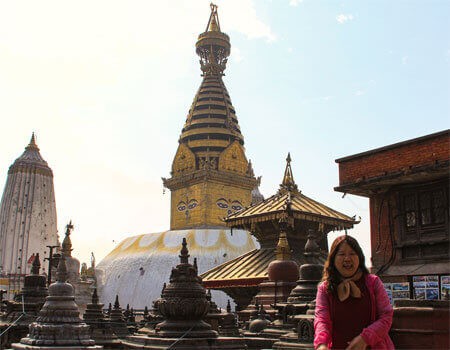Key Places To Visit On Kathmandu City Tour
From diverse cultures to delicious cuisines, many places in Kathmandu are a must-visit and cannot be explored within one day. The city has seven UNESCO World Heritage Sites and many other landmarks. Kathmandu Durbar Square, Swayambhunath, Pashupatinath Temple, and Boudhanath Stupa are significant places tourists cannot miss. These places' rich histories have shaped the city's culture and traditions. Through the City Tour, travelers can experience Kathmandu heartily. From Hinduism to Buddhism, travelers can get the true unique feeling of the city while visiting these places. All these places are located in different parts of the town but are within a 15-20 km radius of each other. So, if travelers want a short trip, they can explore all these places within one day. As such, some of the details are discussed below.
Tour Place 01: Kathmandu Durbar Square - Ancient Royal Palace
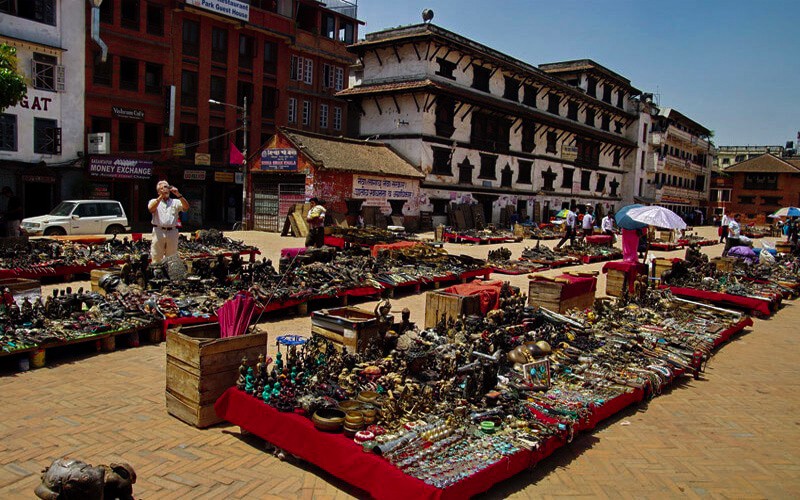
Basantapur Dabali
Exploring the magnificent Kathmandu Durbar Square, also known as Hanuman Dhoka, allows one to experience the history of Kathmandu City. In the past, the square was the residence of the Shah and Malla kings, and even the kings' coronations took place there. The square not only holds palaces but also has many religious shrines, like Taleju Temple, which devotees often visit.
Kumari, the only living goddess of the world, also resides in the Durbar Square premises. Statues of Kal Bhairav, Ashok Vinayak, Kabindrapur, and Basantapur Tower are some of the other attractions around Durbar Square. The Durbar Square is also a favorite among architecture lovers, as the palaces and temples are filled with unique designs and craftsmanship. Many monuments reflect the glorious Newar culture and architecture. Thus, the Kathmandu Durbar Square is a must-visit as it reflects the rich history and culture of the city.
A museum dedicated to history is open to tourists who are curious about it. The fee is USD 15, and if they are from a SAARC country, it is Nrs. 500 (Equivalent USD 5).
There are many places around Durbar Square where tourists can try authentic Newari cuisines. From Bara (lentil pancake) to Choila (spicy buff), the cuisine serves food that delights the tongue of both vegetarians and meat lovers. The square is filled with bustling local people daily, so travelers do not need to worry about visiting hours. During monsoon season, it might get difficult to navigate through the whole area because the streets are narrow and may get muddy.
Tour Place 02: Swayambhunath (Monkey Temple) - Buddhist Site
Perched on a small hillock northwest of the valley, Swayambhunath is a prominent destination for Buddhists and Hindus. It is also called Monkey Temple because of the large population of monkeys residing in the surrounding forests. The panoramic views of the valley that can be seen from this place have also been an attraction for many tourists and locals.
The temple dates back to the 13th century, and many prominent figures, like King Ashoka and King Pratap Malla, have aided in the construction of various aspects of the temple. The huge Vajra sign at the end of the eastern staircase is believed to be the sign of wisdom, so it has been a good luck charm for many students. The Dewa Dharma Monastery and Sleeping Buddha are other attractions here.
The temple is also associated with the valley's origin. Local legends say that Manjushree, a god venerated by Buddhists, saw a vision of a mysterious lotus when the valley was a lake. He then set out to find the lotus and worshipped it. The valley was thus created when Manjushree made a gorge at Chobhar suitable for settlement. Later, the lotus is believed to have transformed into Swayambhunath Stupa.
The entrance fee to the Swayambhunath Temple is NPR 200 (Equivalent to USD 2) for international tourists and Rs.50 (Equivalent to USD 5) for SAARC nationals. The temple is open from dawn till dusk, but the best time to see the panoramic views is in the morning. The tranquil environment and devotees' worshipping will enhance the beauty of this place. The night view of the valley is also breathtaking from here. Swayambhunath is for those who want to witness the harmony between the Hindu and Buddhist cultures. As such, this unity in diversity shapes the lifestyle of the people in the city. However, visiting this temple in the morning is best to avoid crowds. Since it lies in the ring road area of the city, tourists are advised to travel there early to avoid heavy traffic jams.
Tour Place 03: Pashupatinath (Place of open cremation) - Hindu Temple
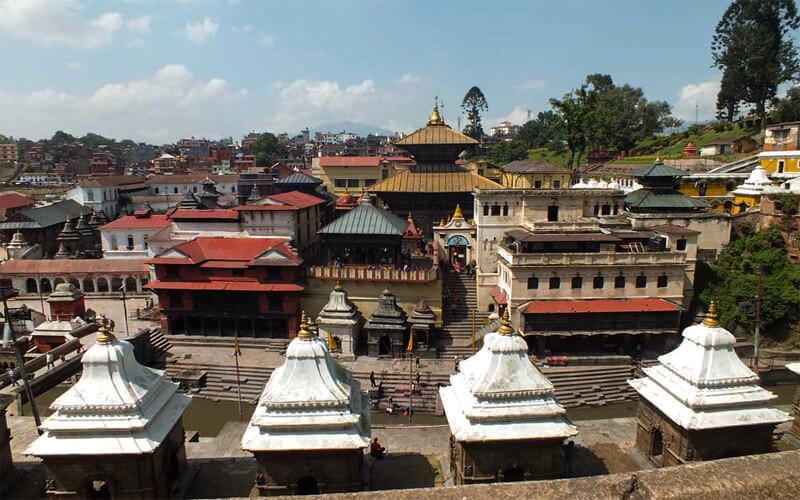
Pashupatinath temple
Another landmark of Kathmandu is Pashupatinath Temple, the holy place for Hindus who are devotees of Lord Shiva. It is located in the northeastern part of the city, on the banks of the Bagmati River. The river is sacred to Hindus and later joins the Ganges in India. The banks of the Bagmati next to the temple also serve as a cremation site for Hindus.
Many legends about this temple are believed to date back to 400 B.C. The Nepalese pagoda-style temple with a golden pinnacle holds the holy lingam (erect phallus) of Lord Shiva and is the main temple. A colossal statue of a golden bull, Nandi, Lord Shiva's beloved bull, can be seen from the west side entrance. The area now adorns many temples like Vasukinath Temple, Budhanikantha Shrine, Guheshwori Temple, and 184 Shiva Lingam shrine. The sadhus, who are devotees of Lord Shiva, are common in the cremation area.
The temple is one of the most significant Hindu shrines in the world and is used to celebrate many great festivals. Shivaratri, Lord Shiva's birthday, is one of the biggest festivals celebrated in the temple. The area is also packed during Teej, which Hindu women celebrate for their husbands' and families' prosperity and good health.
The temple door opens at 4:00 am and closes at 9:00 pm. The best time to visit is early morning and late afternoon. Tourists can get to see at least one open cremation. The site is unique as the whole process is done in the open. Leather items like belts and shoes are prohibited inside the temple or while worshipping. There are a lot of monkeys loitering around, so it is advised not to carry food items in hand. The entrance fee for foreigners is Nrs. 1,000 (Equivalent to USD 10); however, it is free for Indian nationals.
Tour Place 04: Boudhanath (The highest Stupa of Nepal) - Buddhist Sight
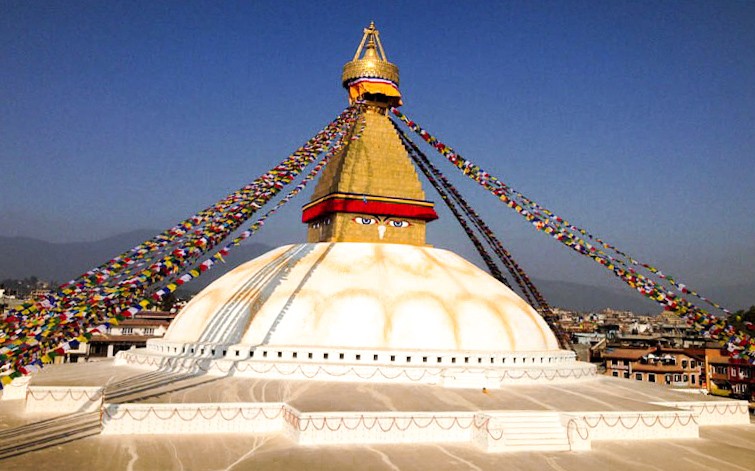
Bouddhanath stupa
Located east of the valley, Boudhanath Stupa is one of the most important destinations for Buddhists worldwide. It is also one of the largest stupas and is a UNESCO world heritage site. The Stupa lies on the trading route used by Tibetan traders in the past. The traders also visited Charumati (little Boudhanath Stupa) at Chabahil. As such, a lot of Tibetan refugees have settled around Boudhanath. The Tibetan style also influences most monasteries inside the Stupa's periphery. The carcass of Kassapa Buddha is believed to be inside the Stupa.
The best time to visit the Stupa is early morning and late evening. In the morning, many Buddhists come for their daily Kora (taking rounds around the Stupa). The Stupa is decorated beautifully in the evening with lights and resonating prayers. During Buddha Jayanti, the festival to celebrate Gautam Buddha's birth, the whole area comes to life with the hustle of pilgrims and holy rituals in the surrounding monasteries. It is celebrated in May. The Stupa is also in festive mode during the Lhosar (New Year) of Sherpa, Gurung, and Tamang. People carry out pujas and light Diyos during New Year. This festival falls between December and February.
The views of the Stupa can be seen more clearly from the surrounding restaurants and cafes. As such, many restaurants inside the Stupa's premises offer local cuisine, predominantly Tibetan and Sherpa. Many dishes may delight tourists, and the must-have is butter tea. The locals take it every morning for their breakfast. There are also cafes where you can relax and enjoy the tranquil surroundings of the Stupa. The entrance fee for foreigners in Bouddhanath is NPR 400 (Equivalent USD 4), and NPR 100 (Equivalent USD 1) for South Asians.
Day Tours Around Kathmandu
- Kathmandu Day Tour
- Dakshinkali Pharping Tour
- Bhaktapur and Patan Day Tour
Other places to visit in Kathmandu
Besides the above-discussed places, the city has many other beautiful places.
To learn more about the history and civilization of this ancient city, tourists can head to Patan Durbar Square, Bhaktapur Durbar Square, and Changunarayan. These places have unique cultures and traditions that cannot be found elsewhere. At the same time, Patan and Bhaktapur Durbar Squares are known for the ravishing display of Newari culture, art, craft, and architecture.
Similarly, Changunarayan is the oldest temple in the country and houses many monuments and artifacts associated with Lord Vishnu. Kirtipur is another destination for those who want to explore the Newari cuisine and history of the city. Many other destinations around Kathmandu offer exciting hiking trails. Kakani, Champadevi, Nagarjun, Godavari, and Phulchowki are a few of the options.
Garden of Dreams, Narayanhiti Palace Museum, Chauni Museum, and Siddha Pokhari are great sites to rest and recuperate. If travelers want to relax with good food and ambiance, Thamel and Durbarmarg are the places to be. It is the city where travelers can get various cuisines ranging from Nepali platters to continental cuisines. Likewise, there are several discos and dance clubs to let off some steam. Cinema halls, futsal, and game centers are also excellent entertainment mediums.
Day Hike Around Kathmandu Valley
- Nagarkot Changunarayan Day Hike
- Champadevi Day Hike
- Jamacho Hill Day Hike
- Shivapuri Hill Nature Hike
- Namobuddha Panauti Day Hike
- Kakani Suryachaur Day Hike
Conclusion
Kathmandu is a city filled with hidden charms and attractions that are unique in their own right. It is heaven for backpackers and travelers who want to escape their mundane lives by getting caught between urbanization and ancient traditions. The blend has brought an irreplaceable appeal. The city, filled with temples, old architecture, and modern designs, has attracted thousands of travelers worldwide. Along with it, the diverse ethnic communities have brought cuisines that tingle all senses, taste-making travelers want more.
